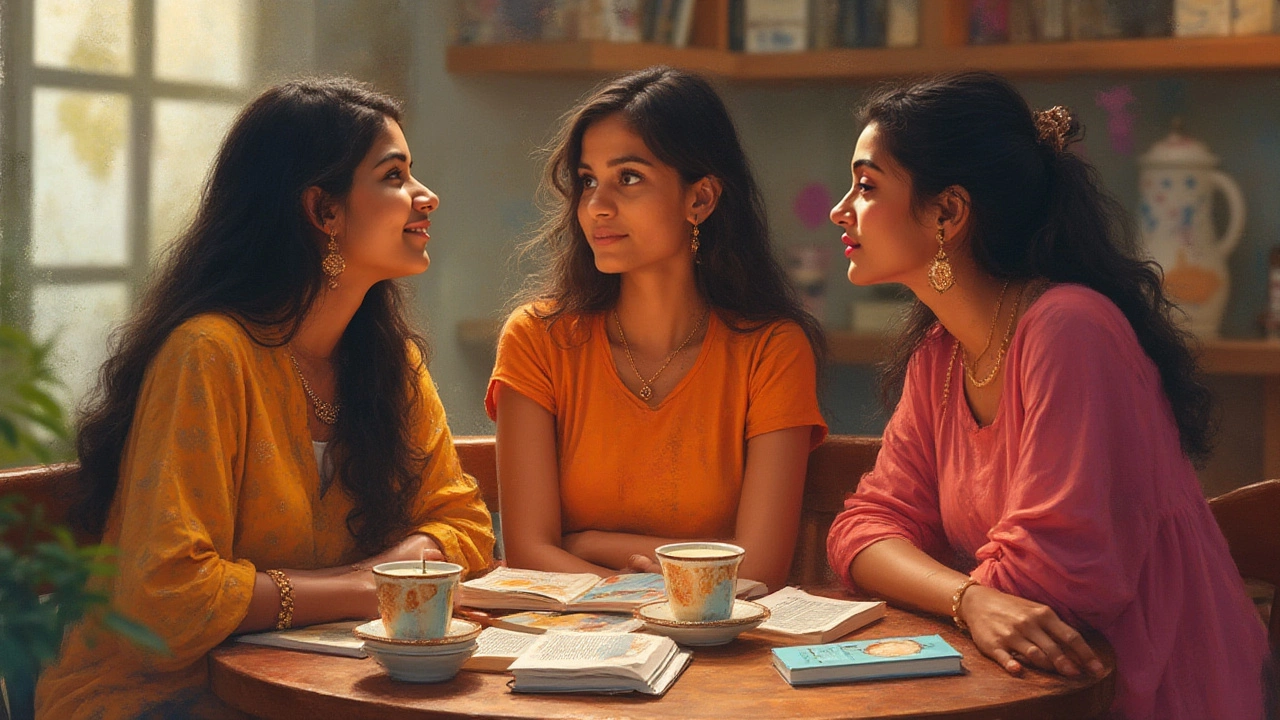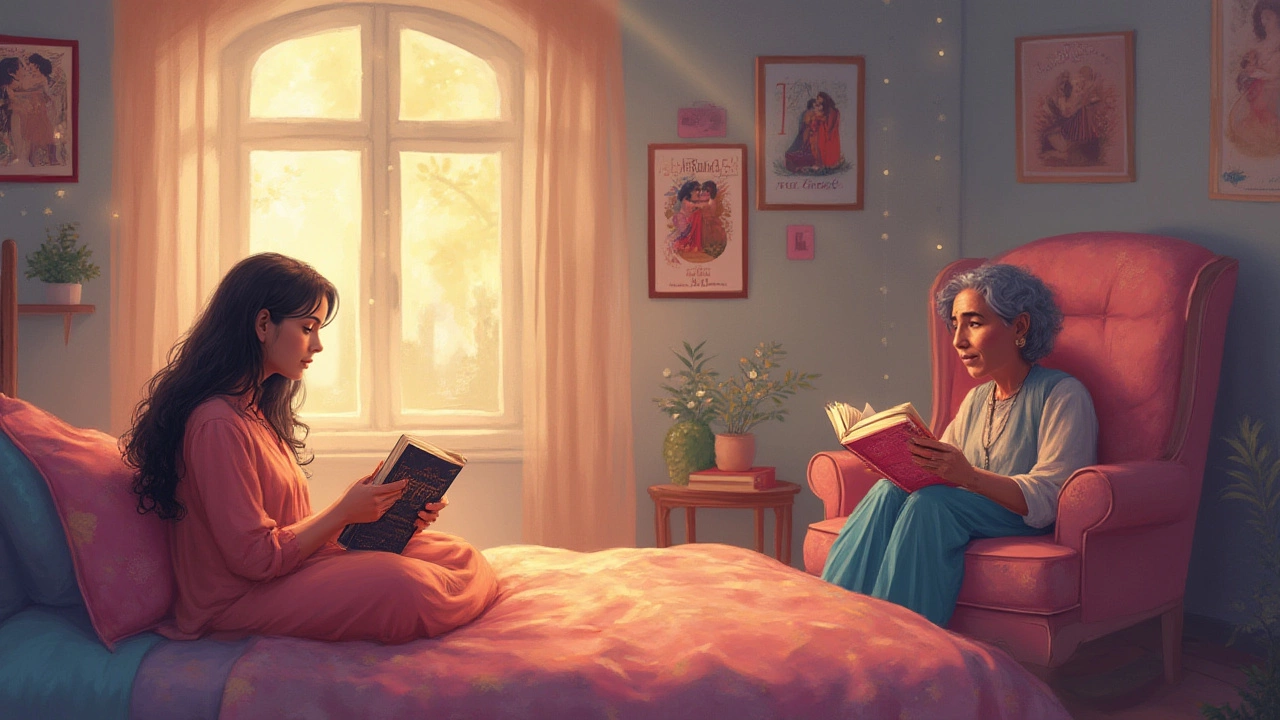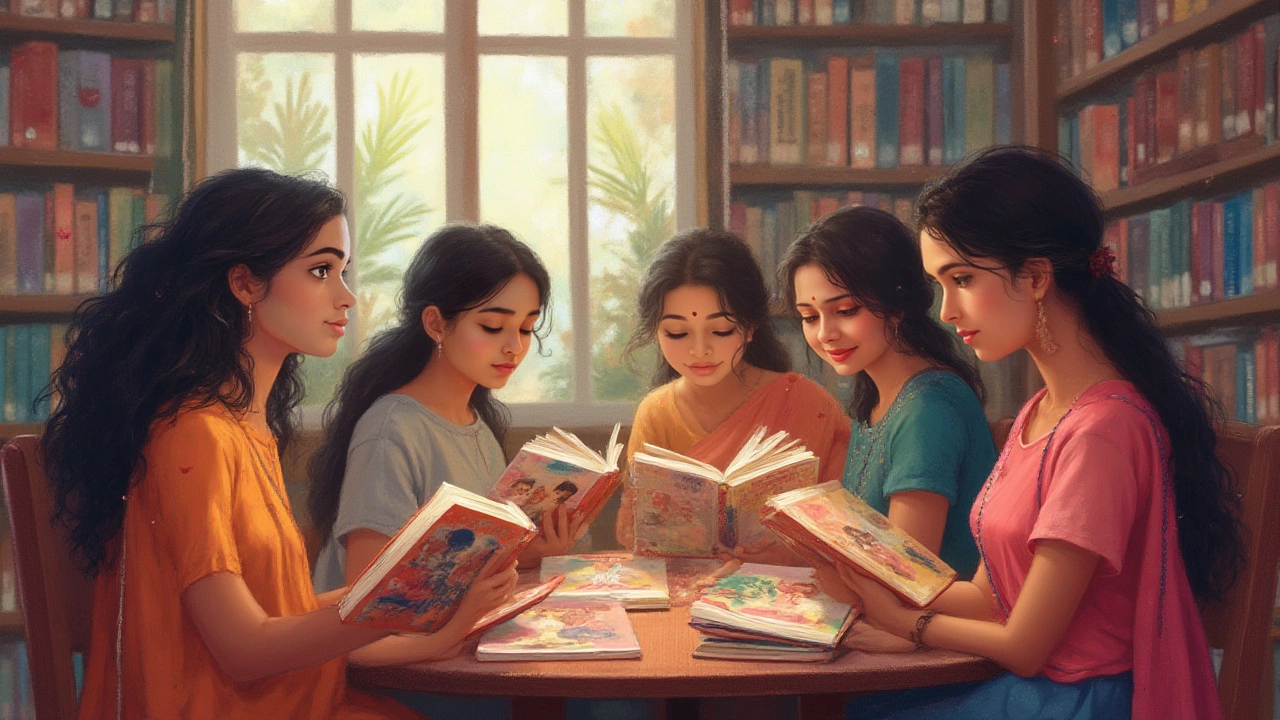You’d be surprised by just how many romance novels fly off the shelves every year. Picture this: a billion-dollar book industry with one of the most loyal followings out there. But who’s flipping those pages the fastest? No, it’s not just moody teenagers or starry-eyed college kids. It’s time to unpack the stats, cut through the clichés, and see which age group powers the engine of the romance genre. Grab your curiosity (Oscar’s wagging his tail, by the way—he seems interested in the answer as well) and let’s decode the age-old question with some hard data, a little myth-busting, and the kind of facts you won’t find on a publisher’s back cover.
The Anatomy of Romantic Readers: Who Loves Romance Novels Most?
Romance novels are everywhere—from airport kiosks to e-reader apps, bustling city libraries to quiet country bookstores. But demographics aren’t always what stereotypes paint them to be. For years, publishing insiders and researchers have sifted through sales numbers, digital analytics, and survey data to answer a question that just won’t quit: which age group devours the greatest number of romance novels, and how does that shape the entire industry?
Here’s where it gets interesting. According to data released by the Romance Writers of America and a couple of big retailers like BookBub and Goodreads, the backbone of romance readership sits squarely between ages 30 and 54. Not the high schoolers or the TikTok generation (though they do have a growing share), but adults—often professionals, parents, and people juggling a million things—are keeping those love stories on bestseller lists.
The numbers back this up: a 2023 Nielsen report broke down romance book purchases by age, and found that 41% of buyers fell between 30 and 54. If you go younger, 18- to 29-year-olds make up roughly 22%, while readers 55 and up come in a close third at just over 30%. One thing stands out: romance doesn’t really lose its spark across the decades. People keep reading—just maybe shifting what tropes or steam levels appeal the most, depending on where they are in life.
Romance also stands apart for its adaptability. Remember the Twilight boom? That sent teen numbers soaring in the late 2000s. With BookTok taking over now, there’s a second wave—Gen Z falling for everything from spicy dark romance to cozy, cottagecore love stories. But even with those trends, the 30-54 crowd continues to buy more titles, read more pages, and leave the most reviews.
Here’s a quick look at romance novel readership by age, so you can see the spread:
| Age Group | % of Romance Book Buyers |
|---|---|
| 18–29 | 22% |
| 30–54 | 41% |
| 55+ | 32% |
What pushes so many adults toward romance? The answer seems simple: these readers crave stories that deliver guaranteed emotional payoffs. Life can get real, especially for folks balancing careers or raising kids. Romance novels offer a break—a place where happy endings are almost non-negotiable. Reading habits often skyrocket during transitions: new jobs, breakups, moving out, empty nesting. Each life stage nudges readers toward stories that mirror their hopes, fears, or what they wish they had time for in real life.
“Escapism” comes up again and again in interviews. Not the bad kind, but the self-care kind. Romance books don’t judge. You can slip into a love story for an hour (or three) after work and come away feeling better. That emotional recharge has made romance one of the most addictive genres for those in the 30–54 window. But that doesn’t mean everyone else is sitting out. In fact, digital romance fiction has sparked a mini-boom among tech-savvy seniors—many retirees now read more than ever thanks to apps and e-readers.
The romance audience is getting more diverse, too. Older millennials are now in their forties and have a taste for both contemporary and historical romance, while Gen Zers are flocking to subgenres like queer romance and dark academia. What keeps the core audience coming back? Familiar plots, sure, but also new perspectives that echo changing social attitudes and cultural trends.

Why Age Matters: Reading Habits, Platforms, and the Shifting World of Romance
Not all age groups interact with romance novels the same way. Let’s map out how age shapes reading habits—right down to whether someone is more likely to pick up a paperback, download a Kindle read, or binge a spicy audiobook.
Digital reading has exploded in the last decade. According to a Pew Research Center survey, in 2022, over 55% of romance novel purchases happened digitally. Adults aged 30–54 lead e-book buying, but younger readers (especially Gen Z) are catching up, drawn in by platforms like Wattpad, AO3, and BookTok. These apps and hashtags have caused certain titles to become overnight sensations. BookTok—where users gush about their new favorite love story in 60-second videos—has made romance more visible than ever to teens and those in their twenties.
But the audiobook craze belongs mostly to busy adults. Think about it: you can listen while driving to work, jogging in the morning, or chasing after a toddler with one headphone in. 30- to 54-year-olds dominate romance audiobook consumption—Audible’s data shows romance as the top genre for women in this bracket. Retirees (age 55 and up) lean heavily toward large-print and audiobooks too, with libraries seeing a spike in digital loans among seniors during the COVID-19 lockdowns.
Here’s how it breaks down:
- 18–29: Digital-first, mobile reading, social media recommendations, lots of fandom-driven reads.
- 30–54: Mix of formats—e-books at bedtime, audiobooks during chores, paperbacks for vacation.
- 55+: E-readers with large fonts, audiobooks, local libraries as the main supply hub.
Genre preference shifts by age too. Young adults love enemies-to-lovers, fake dating, or the kind of forbidden romance that would set a small town buzzing. Many 30- to 54-year-olds prefer second-chance love, slow burns, or stories featuring characters with a little more life under their belts. Older readers often go for historical romance, cozy mysteries with romantic themes, or even new adult novels with mature protagonists—proof that there’s no age cap on falling for a good story.
One more wild fact: romance readers as a whole tend to read fast and often. According to data from Kobo and Goodreads, the average romance reader goes through four to six books a month. Adults aged 30–54 are especially prolific—they buy most of the new releases and are more likely to join online book clubs, leave reviews, or write their own stories. Community is huge here: Goodreads groups and Facebook romance forums attract tens of thousands of active users, most falling in the 35–50 range. These groups swap recommendations, host readathons, and debate the merits of angsty versus sweet heroes with hilarious intensity.
So what does this mean for someone looking to get in on the action? If you’re not already in the biggest reader group—don’t sweat it. Romance is wide open; you’re never too young or old to join a fandom. Digital platforms, indie authors, and even TikTok creators have made it impossible to run out of new material or fresh voices. And if you’re worried about judgment, relax. Romance is the most shamelessly loyal of genres. Readers aren’t afraid to admit they just want a happy ending (even Oscar, stretched out on the rug during a thunderstorm, seems to prefer a good rom-com soundtrack).

Tapping Into Romance: Tips for Every Age Group to Maximize the Experience
Maybe you’re already tearing through a book a week, or maybe you’re curious what the fuss is about. Either way, there’s an art to getting the most out of romance novels—no matter how many birthdays you’ve stacked up. Here are a few shortcuts and power tips, inspired by real reader trends in each age bracket.
- For 18–29-year-olds:
Try mixing it up with indie authors on Wattpad or checking BookTok for trending titles (look for hashtags like #Romantasy or #SpicyReads). Don’t be afraid to explore LGBTQ+ and nontraditional romance—this is where the freshest voices and wildest twists live. - For 30–54-year-olds:
If your attention is split, audiobooks are your secret weapon. Apps like Audible and Scribd do free trials. Try setting mini reading challenges—like “one new author a month” or “read every finalist from a romance award.” And don’t miss local book clubs, even if they’re online, for some low-pressure social time. This group is by far the engine of the genre, and swapping recommendations can get addictive fast. - For 55+ readers:
Large-print editions and e-readers with customizable fonts are a lifesaver. Digital library apps like Libby or Hoopla unlock a treasure trove of free books. Don’t overlook memoir-hybrids—authors sometimes blend real-life romance with fiction, giving these stories an extra layer of nostalgia and heart.
There’s also a universal tip that spans generations: don’t worry about the “guilty” in guilty pleasure. Romance novels have built empires around themes people crave—hope, fresh starts, and big feelings. Whether you want to laugh, swoon, or ugly-cry into your pillow, there’s a book for every mood. The only thing that holds anyone back is not knowing where to look. With thousands of new releases every year—from mafia romances to royal families, holiday love stories to time-travel escapades—it’s never been easier to sample a little bit of everything.
And if you’re hunting for book recs? Ask friends, or dive into forums like r/RomanceBooks on Reddit, where the rec lists run long and passionate debates break out over whether “forced proximity” is the best trope (newsflash: it might be). Getting involved means you’ll find your next favorite with half the effort.
Here’s a quick action plan for anyone looking to boost their romance reading journey:
- Pick up a free e-book or audiobook from your library app this week.
- Follow one romance-focused BookTok account for recs and laughs.
- Join a romance book group, online or off.
- Try a subgenre outside your usual comfort zone—paranormal, Regency, queer romance, etc.
- Share what you loved (or hated) online—because the only thing more fun than finishing a romance is arguing about it.
One last thing: romance readers are everywhere, in every age bracket, turning the genre into a global party that never shuts down. If you’re searching for a community or craving stories that deliver a guaranteed mood lift, you’ll find like-minded people across every age group—each with a favorite trope, go-to author, or can’t-miss series.
So go ahead, grab that new release—or dust off a dog-eared paperback with a goofy shirtless dude on the cover. No one’s judging. Just maybe don’t let the dog chew it. Speaking from experience here.

